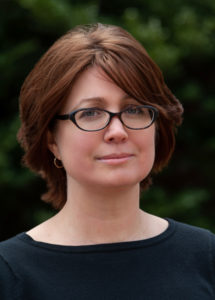 Progressive Voice is a weekly opinion column. The views and opinions are those of the individual authors and do not necessarily reflect the views of their organizations or ARLnow.com.
Progressive Voice is a weekly opinion column. The views and opinions are those of the individual authors and do not necessarily reflect the views of their organizations or ARLnow.com.
By Claire Noakes
Vacationing families expect a line at the funnel cake stand on the boardwalk, but they shouldn’t be surprised if there’s also a line at the monkey bars back at the schoolyard for the foreseeable future.
The latest Arlington Public School (APS) projected enrollment figures anticipate that a decade from now demand for elementary school seats will outstrip the planned supply by 2,472 seats — roughly 19% of the current amount. Meanwhile, development has reduced the availability of acreage for new school construction, especially along Columbia Pike and near Metro stations, where the housing pipeline growth is most concentrated. And parents continue to clamor for walkable neighborhood elementary schools. How will we resolve these competing pressures?
APS commits resources to keep elementary class size hovering around 21 kids, but classroom size doesn’t tell the whole story. The average number of kids attending an Arlington elementary school last year was 619, and planning efforts assume that future elementary schools will consist of 725 seats each, resulting in nearly three dozen classes at one location.
Yet much of the elementary school day occurs outside of the classroom — on bus rides, in the cafeteria, and at recess. Three dozen classes have to cycle through lunchtime — packed into a chaotic cafeteria, with shortened lunch periods that start at 10:45 a.m. Three dozen classes have to share recess space, and crowd control measures like banning games of tag are implemented. Class size can be exemplary, yet students may be miserable — one child at my son’s school would become tearful whenever the cafeteria noise level became too loud.
An elementary school is expected to house six grades (plus pre-school in some cases), but why are we packing these grades into one building, other than tradition? The youngest grades need close chaperoning during the school day, but don’t need the dedicated space for band or theater. Older grades access many resources electronically and need teachers to prepare them for standardized tests. We shouldn’t automatically conflate the different needs of these grades and then replicate the current model to address the upcoming 2,742-seat deficit.
Imagine instead if elementary school was sub-divided, with K-2 incubated at new, smaller scale schools, embedded in residential neighborhoods. Bus traffic might be minimal if the entire boundary had a walkable radius. Physical space could focus on social development and emotional wellness. APS might have better luck with acquiring contiguous residential parcels, rather than competing to find 6-acre lots or upgrading commercial space. Meanwhile, existing elementary schools could be repurposed to hold grades 3-5, or add grade 6, or converted to a middle school as needs dictate.
Of course, building smaller K-2 schools would require a re-think of assumptions for meal preparation, libraries, administrative staffing costs, and after-school activities. Given the shortage of land for building new elementary schools, however, planners should put all options on the table for consideration.
And Arlington wouldn’t be a trailblazer if we subdivided our elementary schools. Five years ago, Fairfax split Bailey’s Elementary School into two campuses, grades K-2 and 3-5. The location for the older kids had challenges — it lacked a playground and is located in a renovated commercial space. Still, we could draw lessons from their experience and emulate what works. Arlington must be nimble–and perhaps think smaller–to address our upcoming elementary school needs.
Claire Noakes serves on Arlington’s Joint Facilities Advisory Commission (JFAC). Her own elementary school experience involved lengthy bus rides, portables (as relocatables were called), and nacho cheese on everything, so things could be worse.

